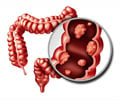Researchers have found that the natural compound sceptrin, which is found in marine sponges, reduces cancer cell motility and has very low toxicity.
Researchers have found that the natural compound sceptrin, which is found in marine sponges, reduces cancer cell motility and has very low toxicity.
Investigators at Sanford-Burnham Medical Research Institute (Sanford-Burnham, formerly Burnham Institute for Medical Research) led by Kristiina Vuori, M.D., Ph.D., made the discovery.Metastasis is one of the deadliest aspects of cancer, so restricting aberrant cell movement is an important step towards advancing treatments. The research was published online in ACS Chemical Biology, in collaboration with Phil S. Baran, Ph.D., of The Scripps Research Institute.
To reach the conclusion, boffins tested sceptrin in multiple tumor cell types, including cervical, breast and lung cancers. Sceptrin restricted motility in all cell lines. Further tests showed the compound works by limiting the cells' ability to contract, a critical function for cell motility. The researchers also found that sceptrin synthesized in the laboratory was just as effective at combating motility as the naturally-derived compound.
"Given the recently achieved synthesis of sceptrin in multi-gram quantities by the Baran laboratory, sceptrin could prove to be an attractive lead molecule for further preclinical testing and development for therapeutic purposes," said Dr. Vuori. "It may also prove to be a useful research tool in order to elucidate the mechanisms involved in cell motility."
The researchers cultured growing cancer cells with growth factor to encourage motility. These cells were treated with varying amounts of sceptrin, which was found to be more effective at increased concentrations. Subsequently, the team conducted apoptosis and cell proliferation studies to determine whether these mechanisms accounted for the decrease in motility of sceptrin-treated cells. Other assays determined that sceptrin limits motility by reducing cell contractility.
Source-ANI
RAS










